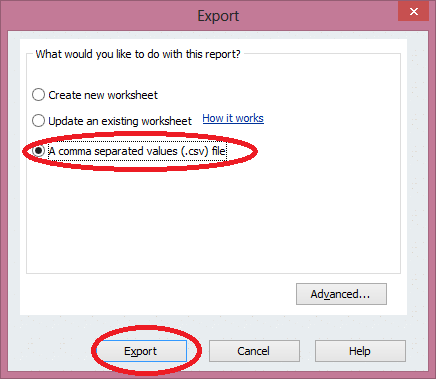
Enter details in LGL and use third-party software to import to QuickBooks Desktopġ. Enter data into QuickBooks Desktop first, and then export a file to import into LGL Enter transaction details into both LGL and QuickBooks Desktop (double entry) Enter transaction details in LGL and lump sum entries in QuickBooks Desktop We describe each scenario as being for QuickBooks Desktop, but the same general approach can be used with any accounting system. If you do not use QuickBooks Online, please continue below to see other options for coordinating your work between LGL and your accounting system. NOTE: Little Green Light offers a direct integration with QuickBooks Online (see help article).
Import data into quickbooks comma or tab code#
Execute the rest of the code to print the head of the resulting DataFrame and plot the histogram of the 'Age' of passengers aboard the Titanic.ĭata = pd.Working with QuickBooks Desktop and other accounting systems.na_values takes a list of strings to recognize as NA / NaN, in this case the string 'Nothing'. comment takes characters that comments occur after in the file, which in this case is '#'. # Print the datatype of data_array to the shellĬomplete the sep (the pandas version of delim ), comment and na_values arguments of pd.read_csv(). # Build a numpy array from the DataFrame: data_array # Read the first 5 rows of the file into a DataFrame: dataĭata=pd.read_csv(file, nrows=5, header=None) Execute print(type(data_array)) to print the datatype of data_array.Build a numpy array from the resulting DataFrame in data and assign to data_array.You’ll need to use the arguments nrows and header (there is no header in this file). Import the first 5 rows of the file into a DataFrame using the function pd.read_csv() and assign the result to data. In a print() call, view the head of the DataFrame.The file name is already stored in the file object. Read titanic.csv into a DataFrame called df.Import the pandas package using the alias pd. Ī DataFrame has observations and variables Run the remaining code to print the first three entries of the resulting array d.You’ll only need to pass file to it because it has the defaults delimiter=',' and names=True in addition to dtype=None !

Import titanic.csv using the function np.recfromcsv() and assign it to the variable, d. # Import data as floats and skip the first row: data_floatĭata_float = np.loadtxt(file, delimiter=’\t’, dtype=float, skiprows=1) Execute the rest of the code to visualize the data.ĭata = np.loadtxt(file, delimiter=’\t’, dtype=str).Print the 10th element of data_float by completing the print() command.The file you’re importing is tab-delimited, the datatype is float, and you want to skip the first row. Complete the second call to np.loadtxt().Execute print(data) to print the first element of data.Complete the argument of the print() call in order to print the entire array that you just imported.ĭata = np.loadtxt(file, delimiter=’\t’, skiprows=1, usecols=)Ĭomplete the first call to np.loadtxt() by passing file as the first argument.Plt.imshow(im_sq, cmap=’Greys’, interpolation=’nearest’)Ĭomplete the arguments of np.loadtxt() : the file you’re importing is tab-delimited, you want to skip the first row and you only want to import the first and third columns. # Plot reshaped data (matplotlib.pyplot already loaded as plt) Execute the rest of the code to visualize one of the rows of the data.Fill in the argument of print() to print the type of the object digits.flat files wiht numerical data and strings (titanic.csv)ĭata = np.loadtxt(filename, delimiter=’,’)ĭata=np.loadtxt(filename, delimiter=’,’, skiprows=1)ĭata=np.loadtxt(filename, delimiter=’,’, skiprows=1, usecol=(0,2)) # to get only the first and third columns of the dataįill in the arguments of np.loadtxt() by passing file and a comma ',' for the delimiter. flat files with only numerical data (MNIST)Ģ. THE IMPORTANCE OF FLAT FILES IN DATA SCIENCEįLAT FILES–> basictext file containing records//ġ. Print the first three lines of the file to the shell by using readline() three times within the context manager.Open moby_dick.txt using the with context manager and the variable file. Check again that the file is closed as you did above.Close the file using the close() method.Check whether the file is closed by executing print(file.closed).As Hugo showed in the video, you’ll need to apply the method read() to the object file. Print the contents of the file to the shell using the print() function.Make sure to pass the filename enclosed in quotation marks ''. Open the file moby_dick.txt as read-only and store it in the variable file. File =open(filename, mode =’r’) #’r’ is to readįile =open(filename, mode=’w) #’w’ is to read


 0 kommentar(er)
0 kommentar(er)
